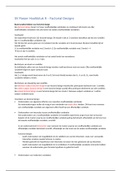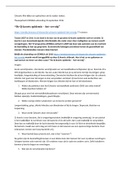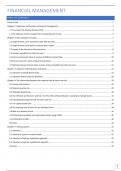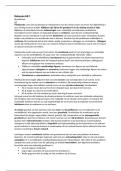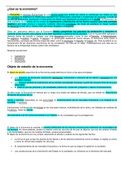Experiential Learning Theory:
Previous Research and New Directions
David A. Kolb
Richard E. Boyatzis
Charalampos Mainemelis
Department of Organizational Behavior
Weatherhead School of Management
Case Western Reserve University
10900 Euclid Avenue,
Cleveland, OH 44106
PH: (216) 368 -2050
FAX: (216) 368-4785
dak5,@msn.com
August 31, 1999
The revised paper appears in:
R. J. Sternberg and L. F. Zhang (Eds.), Perspectives on cognitive, learning, and
thinking styles. NJ: Lawrence Erlbaum, 2000.
, 2
Experiential Learning Theory: Previous Research and New Directions
Experiential Learning Theory (ELT) provides a holistic model of the
learning process and a multilinear model of adult development, both of which are
consistent with what we know about how people learn, grow, and develop. The
theory is called “Experiential Learning” to emphasize the central role that
experience plays in the learning process, an emphasis that distinguishes ELT from
other learning theories. The term “experiential” is used therefore to differentiate
ELT both from cognitive learning theories, which tend to emphasize cognition
over affect, and behavioral learning theories that deny any role for subjective
experience in the learning process.
Another reason the theory is called “experiential” is its intellectual origins
in the experiential works of Dewey, Lewin, and Piaget. Taken together, Dewey’s
philosophical pragmatism, Lewin’s social psychology, and Piaget’s cognitive-
developmental genetic epistemology form a unique perspective on learning and
development. (Kolb, 1984).
The Experiential Learning Model and Learning Styles
Experiential learning theory defines learning as "the process whereby
knowledge is created through the transformation of experience. Knowledge
results from the combination of grasping and transforming experience"(Kolb
1984, p. 41). The ELT model portrays two dialectically related modes of grasping
, 3
experience -- Concrete Experience (CE) and Abstract Conceptualization (AC) --
and two dialectically related modes of transforming experience -- Reflective
Observation (RO) and Active Experimentation (AE). According to the four-stage
learning cycle depicted in Figure 1, immediate or concrete experiences are the
basis for observations and reflections. These reflections are assimilated and
distilled into abstract concepts from which new implications for action can be
drawn. These implications can be actively tested and serve as guides in creating
new experiences.
-------------------------------
Insert Figure 1 about here
-------------------------------
A closer examination of the ELT learning model suggests that learning
requires abilities that are polar opposites, and that the learner must continually
choose which set of learning abilities he or she will use in a specific learning
situation. In grasping experience some of us perceive new information through
experiencing the concrete, tangible, felt qualities of the world, relying on our
senses and immersing ourselves in concrete reality. Others tend to perceive, grasp,
or take hold of new information through symbolic representation or abstract
conceptualization – thinking about, analyzing, or systematically planning, rather
than using sensation as a guide. Similarly, in transforming or processing
experience some of us tend to carefully watch others who are involved in the
, 4
experience and reflect on what happens, while others choose to jump right in and
start doing things. The watchers favor reflective observation, while the doers
favor active experimentation.
Each dimension of the learning process presents us with a choice. Since it
is virtually impossible, for example, to simultaneously drive a car (Concrete
Experience) and analyze a driver’s manual about the car’s functioning (Abstract
Conceptualization), we resolve the conflict by choosing. Because of our
hereditary equipment, our particular past life experiences, and the demands of our
present environment, we develop a preferred way of choosing. We resolve the
conflict between concrete or abstract and between active or reflective in some
patterned, characteristic ways. We call these patterned ways “learning styles.”
The Learning Style Inventory and the Four Basic Learning Styles
In 1971 David Kolb developed the Learning Style Inventory (LSI) to
assess individual learning styles. While individuals tested on the LSI show many
different patterns of scores, research on the instrument has identified four
statistically prevalent learning styles -- Diverging, Assimilating, Converging, and
Accommodating (Figure 1). The following summary of the four basic learning
styles is based on both research and clinical observation of these patterns of LSI
scores (Kolb, 1984, 1999a, 1999b).
Previous Research and New Directions
David A. Kolb
Richard E. Boyatzis
Charalampos Mainemelis
Department of Organizational Behavior
Weatherhead School of Management
Case Western Reserve University
10900 Euclid Avenue,
Cleveland, OH 44106
PH: (216) 368 -2050
FAX: (216) 368-4785
dak5,@msn.com
August 31, 1999
The revised paper appears in:
R. J. Sternberg and L. F. Zhang (Eds.), Perspectives on cognitive, learning, and
thinking styles. NJ: Lawrence Erlbaum, 2000.
, 2
Experiential Learning Theory: Previous Research and New Directions
Experiential Learning Theory (ELT) provides a holistic model of the
learning process and a multilinear model of adult development, both of which are
consistent with what we know about how people learn, grow, and develop. The
theory is called “Experiential Learning” to emphasize the central role that
experience plays in the learning process, an emphasis that distinguishes ELT from
other learning theories. The term “experiential” is used therefore to differentiate
ELT both from cognitive learning theories, which tend to emphasize cognition
over affect, and behavioral learning theories that deny any role for subjective
experience in the learning process.
Another reason the theory is called “experiential” is its intellectual origins
in the experiential works of Dewey, Lewin, and Piaget. Taken together, Dewey’s
philosophical pragmatism, Lewin’s social psychology, and Piaget’s cognitive-
developmental genetic epistemology form a unique perspective on learning and
development. (Kolb, 1984).
The Experiential Learning Model and Learning Styles
Experiential learning theory defines learning as "the process whereby
knowledge is created through the transformation of experience. Knowledge
results from the combination of grasping and transforming experience"(Kolb
1984, p. 41). The ELT model portrays two dialectically related modes of grasping
, 3
experience -- Concrete Experience (CE) and Abstract Conceptualization (AC) --
and two dialectically related modes of transforming experience -- Reflective
Observation (RO) and Active Experimentation (AE). According to the four-stage
learning cycle depicted in Figure 1, immediate or concrete experiences are the
basis for observations and reflections. These reflections are assimilated and
distilled into abstract concepts from which new implications for action can be
drawn. These implications can be actively tested and serve as guides in creating
new experiences.
-------------------------------
Insert Figure 1 about here
-------------------------------
A closer examination of the ELT learning model suggests that learning
requires abilities that are polar opposites, and that the learner must continually
choose which set of learning abilities he or she will use in a specific learning
situation. In grasping experience some of us perceive new information through
experiencing the concrete, tangible, felt qualities of the world, relying on our
senses and immersing ourselves in concrete reality. Others tend to perceive, grasp,
or take hold of new information through symbolic representation or abstract
conceptualization – thinking about, analyzing, or systematically planning, rather
than using sensation as a guide. Similarly, in transforming or processing
experience some of us tend to carefully watch others who are involved in the
, 4
experience and reflect on what happens, while others choose to jump right in and
start doing things. The watchers favor reflective observation, while the doers
favor active experimentation.
Each dimension of the learning process presents us with a choice. Since it
is virtually impossible, for example, to simultaneously drive a car (Concrete
Experience) and analyze a driver’s manual about the car’s functioning (Abstract
Conceptualization), we resolve the conflict by choosing. Because of our
hereditary equipment, our particular past life experiences, and the demands of our
present environment, we develop a preferred way of choosing. We resolve the
conflict between concrete or abstract and between active or reflective in some
patterned, characteristic ways. We call these patterned ways “learning styles.”
The Learning Style Inventory and the Four Basic Learning Styles
In 1971 David Kolb developed the Learning Style Inventory (LSI) to
assess individual learning styles. While individuals tested on the LSI show many
different patterns of scores, research on the instrument has identified four
statistically prevalent learning styles -- Diverging, Assimilating, Converging, and
Accommodating (Figure 1). The following summary of the four basic learning
styles is based on both research and clinical observation of these patterns of LSI
scores (Kolb, 1984, 1999a, 1999b).


